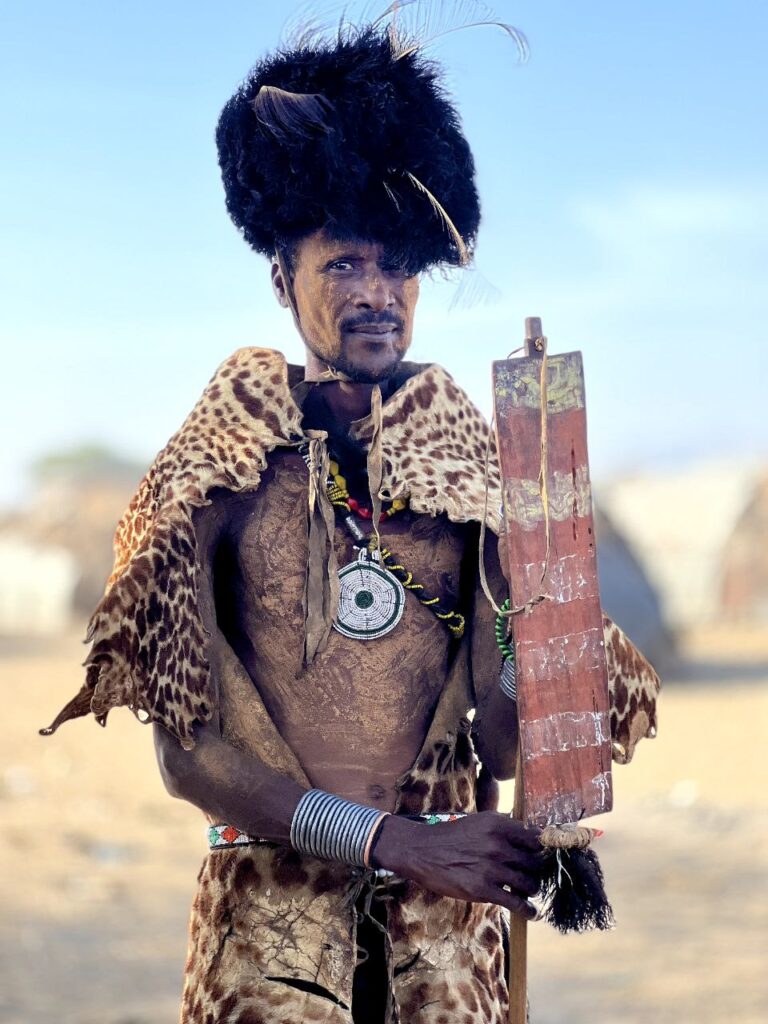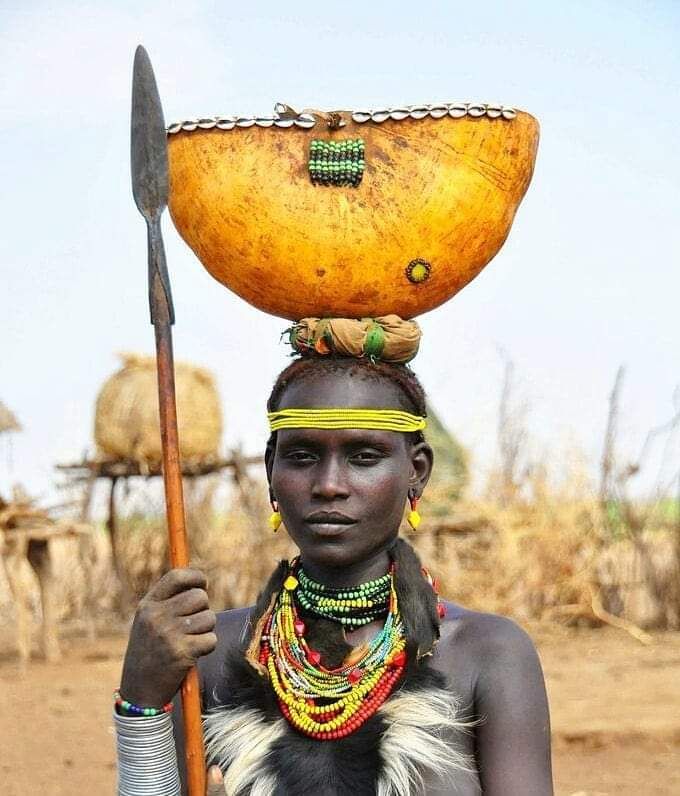These Cushitic speaking people live in the semi-arid area of the Lower Omo Valley and the northern shore of Lake Turkana. They have also been referred to as ‘Geleb’ in Ethiopia and are known as ‘Merile’ and ‘Shangilla’ in Kenya
The Daasanach are made up of eight roughly co-residential territorial groups (en) which conduct many rituals together. The Inkabelo, the largest of these groups, live at the centre of Daasanachland, on both sides of the Omo and its delta, along with three smaller groups, the Oro, the Kuoro and the Riele. The Randal and the Elele live in the northwestern part of Daasanachland. The Inkoria live on the northeastern shore of Lake Turkana, on the Kenyan side of the border. The Ngaritch are located to the north of the Inkoria.
According to oral tradition, many of these groups are the descendants of migrants who came to the Omo from various directions to escape such problems as famine and conflict and who thereby constructed ‘Daasanach’ society. For example, the Inkabelo and the Inkoria (together known as Shiir) lived at a place called Ger or Gerio, probably around the Kerio River on the southwestern side of Lake Turkana, along with the Nyube, or Pokot. When the Turkana (some elders told me the attackers were the Kuoro) attacked them in the early 19th century, the Nyube escaped southward to present Pokotland while the Inkabelo and Inkoria escaped northward, to present Daasanachland. The Randal and the Kuoro originated from the Rendille and the Samburu of northwestern Kenya. They moved to Daasanachland because of natural disasters in the last two decade of the 19th century.
Amongst the Daasanach, patrilineal clans (tuuro) or other kin groups do not function as co-resident groups. Although there is no fixed residential pattern for a village, it often consists of influential older men and their cognates, affines, age-mates, and friends. On the eastern side of the Omo there are generally between five and thirty houses per village while on the western side, where people are afraid of attack from neighbouring groups, there are generally more than fifty. The distance between villages on both sides of the river is more than several hundred metres.
All Daasanach men belong to a generation-set (haari). A man joins his set between the ages of fifteen and twenty through an initiation ceremony, after which he moves from the status of boy (nyigeny) to adolescent (kabana). After initiation men are able to marry and most are married before they are thirty. Girls marry between the ages of fifteen and twenty. When a couple’s first daughter reaches the age of approximately ten years, they go through a ceremony known as dimi, after which they are recognized as social elders (karsich).
The Daasanach have developed an extremely unique way of making jewellery from items such as SIM cards, old digital watches, and bottle caps. In fact, their headdresses made from bottle caps are particularly recognisable. Women wear pleated cow skin skirts with many bracelets and necklaces, whilst men wear a cloth around their waist.


